Last month, I shared with you tips on how retailers could use data hidden in Google Merchant Center to improve SEO performance for local ecommerce queries.
Since we’re ultimately all trying to sell something via search, let’s keep the ecommerce vibe flowing.
In this column, we’ll explore a relatively new Google feature that all retailers should have on your radar: Google’s Top Products Carousel.
What Is Google’s Top Products Carousel & Why Is It Important for SEO?
If you have recently done a search in Google for the “best” of something, chances are you have come across Google’s Top Products Carousel (TPC).
It looks something like this:
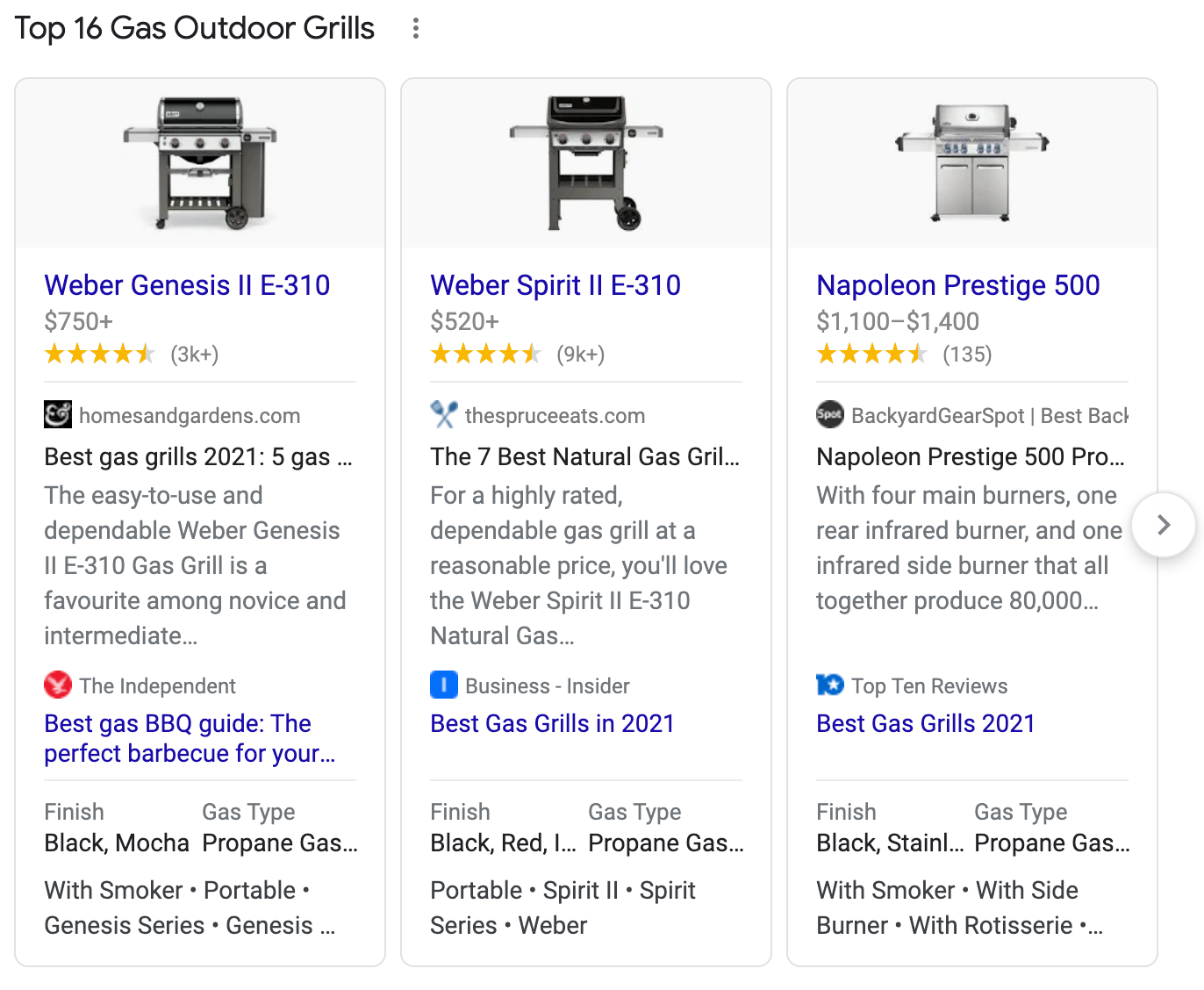
Here’s what it looks like on mobile:
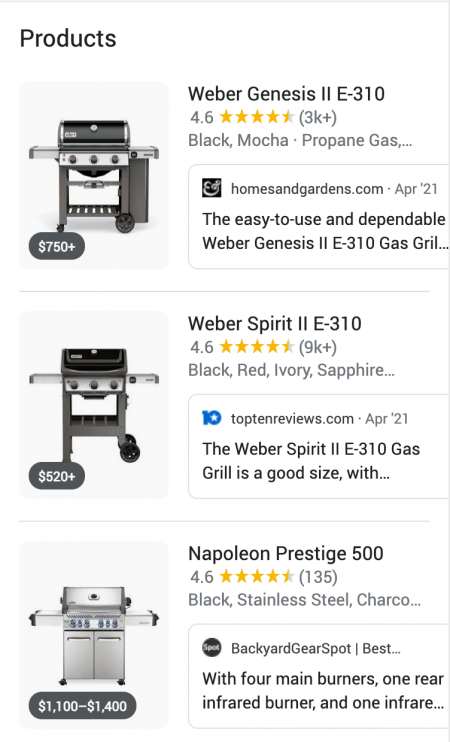
The mobile version is pretty cool as you can scroll through different reviews for each product:
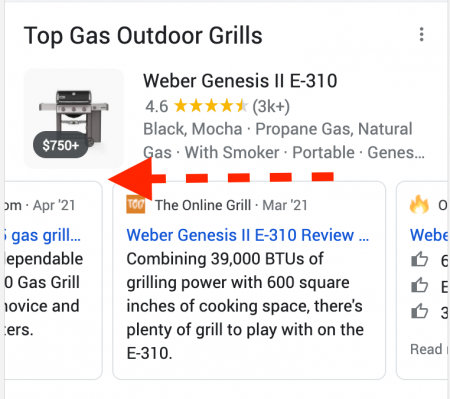
In short, the TPC does a pretty good job of providing valuable review info to searchers who are looking to buy the “best” of something.
But you don’t even have to search for the “best.” This SERP feature tends to appear even if you just search for the product type (e.g., “gas grill”).
That means searchers are much less likely to click on your ecommerce page for “gas grill,” even if it outranks the TPC.
As a seller who likes the idea of “free” organic conversions, it is likely in your best interest to learn a bit about how the TPC works.
Google’s Top Products Carousel Features
The Top Products Carousel module typically contains a list of three product cards, each with the following elements (and you can scroll to get additional product cards):
- Product name and image linked to the SERP for that product name.
- Average rating (numerical and stars), presumably across all review sources used in the TPC for that product.
- Approximate # of ratings.
- Key product features/keywords.
- Horizontally scrollable list of review cards with various data from review source including, but not limited to: favicon, review date, numerical rating, review headline, an excerpt of review, a link to the source URL, an “About this product card,” and a summary of reviews card. On desktop, you typically see two review sources for each product on the initial cards.
Some example cards you might scroll upon:
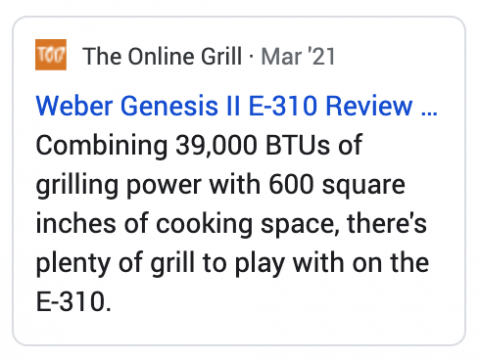
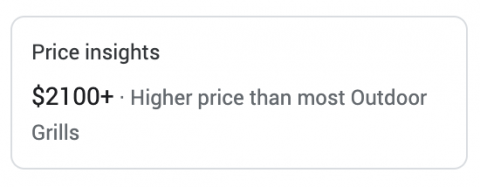
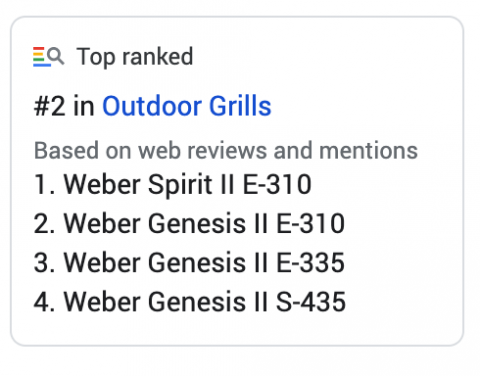
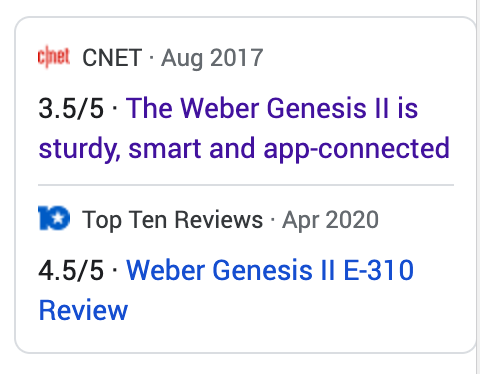
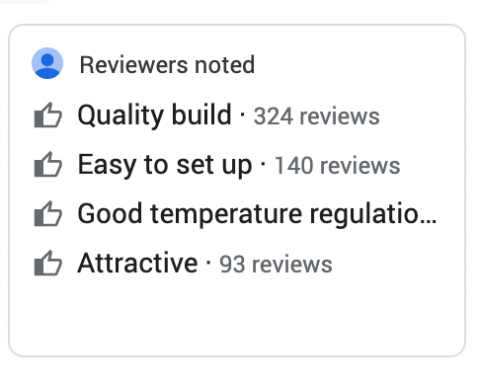
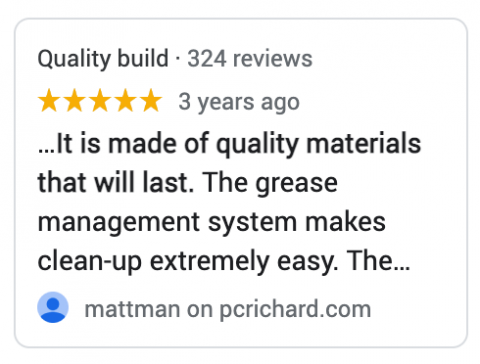
How Are Google Top Products Carousels Created?
While I don’t have the keys to the algorithm for this feature (yet!), based on what we can see it’s a fair bet that Google uses some version of its organic ranking algorithm to assign authority to various reviews it finds throughout the web.
There may be some combination of domain-level and page-level ranking.
Certainly, sites using structured data on their product and review content make it easier for Google to find, aggregate, and display this content.
And since most products have the same attributes no matter where they are displayed, I imagine Google can easily aggregate whichever it thinks are the most common/important.
What’s most interesting to me is the types of sites that Google displays as sources.
The most common sources I’ve found are traditional media brands (e.g., USAToday, NY Times, etc.), Internet-only media brands (CNet, BusinessInsider, etc.), and then perhaps of most interest — ecommerce sites.
This makes sense as reviews happen everywhere these days, not just on “review” sites.
Who Is Winning at Top Products?
In a highly unscientific study, I looked at which sites were appearing most often in results for 20 different products.
For each query, I noted the domains that appeared first in the TPC. Here’s what I found:
- Internet-only media brands were the clear winners, appearing in every result I checked.
- Traditional media brands only appeared about one-third of the time.
- Ecommerce sites rarely appeared in the first slot, but I often found one or two when scrolling horizontally through a product’s review cards.
It kind of makes sense that Internet-only sites like Tom’s Guide are succeeding at Top Products.
They are 100% focused on creating useful “best” guides for a wide range of products.
They get a lot of backlinks, particularly with “best” and “review” in the anchor text. And search demand for Tom’s is growing.
Google Trends shows they have become basically as popular as NYT’s The Wirecutter:
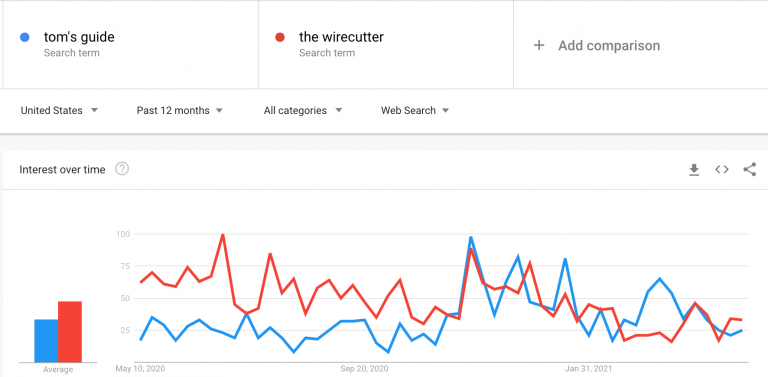
Do Top Products Rankings Correlate With Organic Rankings?
I didn’t see many review sites ranking in the organic results for the product when the Top Products Carousel was present.
With that said, I almost always saw them ranking in the top 10-20 organic results for a question related to the product query.
For example, TheSpruceEats.com was in the TPC for “gas grills,” not in the organic results. They were in the top 10 for “what is the best gas grill to buy?”
If you want to appear in the TPC, it appears that you will need to optimize your SEO for that particular product.
What Can You Do to Optimize for the Top Products Carousel?
TPC optimization is likely not too different than optimizing for a specific product query.
However, given the different elements we can see that make up the TPC, you should probably ensure that your optimization program takes them into consideration:
Monitor Which of Your Keywords Have These Modules
I would expect that most product SERPs will over time. I haven’t seen any of the big SERP scraping tools reporting on this feature yet, but I imagine they will start soon.
Prioritize Internal Links/Optimization for Those Products You Carry That Are Listed in the TPC’s
They are the best after all, and people will be searching for them.
Click on the Products Listed in the TPC’s and Get to Know What’s in These Product SERPs
Chances are you will see a combination of review sites, Google My Business listings, review videos, and ecommerce sites. These are all opportunities for ranking.
If You Are Not Already, You Should Seriously Look at Your Product Review Strategy
In order to be seen by Google as a trusted source of reviews for a product, I recommend that you do the following:
Ensure you have a steady stream of customer reviews about the target product and related products.
Consider writing your own editorial reviews of these products. Why should the review sites have all the fun? At a minimum, test creating a “Best” page for key product categories so you can have your own “Best Gas Grills 2021” page, etc. You can always use “Best Sellers” if you don’t want to favor one of your suppliers over the other.
Make sure the reviews are marked up with structured data such as Review schema.
Embed credible 3rd party editorial review content on your site similar to how Amazon does it. For example:
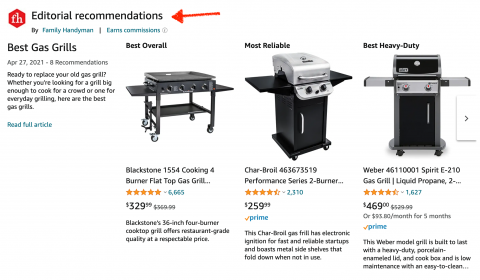 Think outside of the SERP Feature box. Great content is one way retailers can fight their way out of being yet another transactional site in the SERPs, particularly if you are being elbowed out by some of the bigger retail brands.
Think outside of the SERP Feature box. Great content is one way retailers can fight their way out of being yet another transactional site in the SERPs, particularly if you are being elbowed out by some of the bigger retail brands.
If you can’t create it yourselves, consider acquiring one of the review sites that is doing a great job in your niche.
Of course, you may want to consult your SEO team before you do, as Google may not be too crazy about vertical plays like this.
Nothing ventured, nothing gained!
Monitor which content sites rank in your target TPC. Perhaps there’s an opportunity for an affiliate partnership?
Given the prominence of the Top Products Carousel, this is real estate you can’t afford to pass up.
More Resources:
- Ecommerce Product Page SEO: 20 Dos & Don’ts
- How to Leverage User-Generated Content to Boost Your Ecommerce SEO
- Ecommerce Marketing: The Definitive Guide
Image Credits
All screenshots taken by author, May 2021





